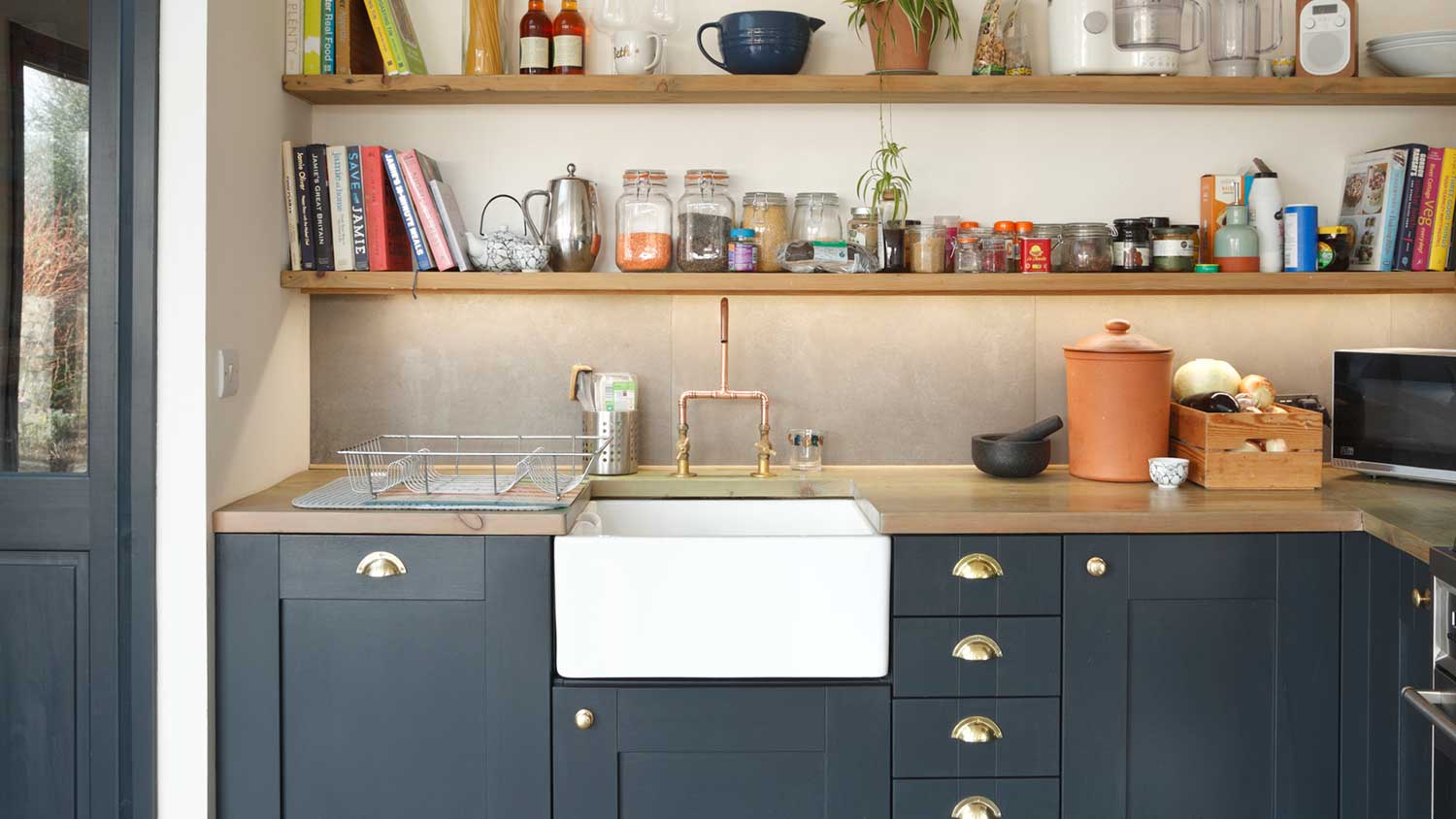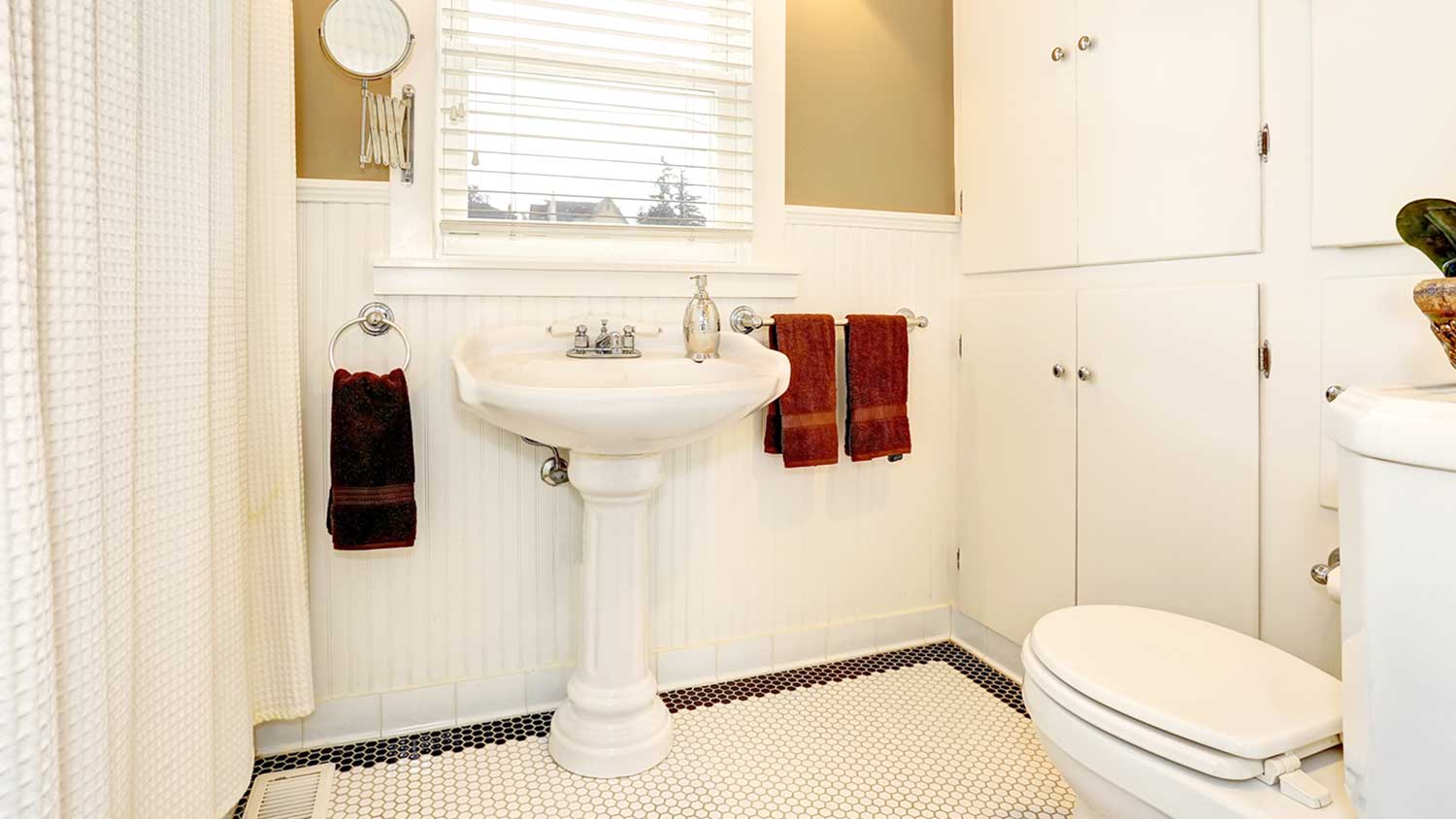Ceramic vs. Porcelain Sinks: Which Is Better for Your Space?
Sink into all that porcelain and ceramic have to offer


Ceramic and porcelain are made of clay and fired at high temperatures.
Choosing a ceramic sink can help you stretch your budget.
The variety of colors and styles for ceramic allows you to customize your space.
Porcelain sinks can be more durable, so they’re better for heavy use.
Porcelain is the way to go if you need a low-maintenance and easy-to-clean sink.
A new sink can make your bathroom or kitchen sparkle. But before basking in that new-sink glory, you’ll need to decide which sink material best suits your needs and aesthetic. If you can’t decide between ceramic versus porcelain sinks, keep reading to discover key differences, pros and cons, and which is the winner for your home.
Ceramic Sinks vs. Porcelain Sinks: Key Differences
Ceramic and porcelain start as a clay mixture, but the finished products differ in several ways. Ceramic sinks are more affordable and available in a wider variety of styles and colors than porcelain. While ceramic is durable and prized for its hardy beauty, porcelain sinks are even more resistant to impact, stains, and hot temperatures, so you’re more likely to find porcelain fixtures in high-traffic kitchens and bathrooms.

What Is a Ceramic Sink?

Because of their nonporous surfaces, ceramic sinks are durable, wallet-friendly, and easy to clean. However, they will crack or chip if subjected to heavy blows, stain more easily than other materials, and are susceptible to high temperatures and extreme temperature fluctuations.
| Pros | Cons |
|---|---|
| Less expensive | Can crack and chip with heavy impact |
| Durable | More sensitive to heat than other materials |
| Easy to clean | Glaze defects and damage allow staining |
| Variety of styles, colors, and shapes |
Best for:
Homeowners on a budget who like the look of ceramic
Homeowners with a specific color, style, or design in mind
DIYers looking for a less challenging sink to install
Rental properties and guest bathrooms
Projects where affordability and design are equally weighted
Pros of Ceramic Sinks
A major upside to ceramic sinks is that you can get a lot of advantages at a reasonable price.
Prices range from $100 to $500, including the sink installation cost, depending on style and size.
With average use, they’re durable and hard to crack, chip, or damage.
Ceramic sink basins are easy to clean and require only a wipe-down with water or regular household cleaning products.
They come in various styles and designs, fitting almost any decor.
Ceramic sinks are easier to install yourself if you know how to install a bathroom sink. You can also call a pro who installs bathroom sinks to get the job done.
Cons of Ceramic Sinks
Before calling a local sink installer to put in a new ceramic sink, consider the downsides to this material as well as the advantages. Here are the biggest drawbacks to be aware of:
They will crack and chip if subjected to hard impacts, especially if you drop a heavy object like a large pot or dish.
Ceramics can be more sensitive to heat and severe temperature changes than other materials, but they should hold up to normal temperatures in the kitchen and bath.
They can stain if the glaze is damaged or has manufacturing defects.
What Is a Porcelain Sink?

Porcelain sinks consist of dense ceramic material fired at a very high temperature. This makes them even more durable and less porous than ceramic sinks, easy to care for, and more resistant to staining. Some sinks are solid porcelain, while others have a porcelain enamel coating over other materials, like steel, iron, or fireclay.
| Pros | Cons |
|---|---|
| More durable | More expensive |
| Resists stains | Not stain-proof or scratch-proof |
| Tolerates heat and hot liquids | Fewer color and style options |
Best for:
Families with children that need a more durable, stain-resistant sink option
Homeowners who want a very low-maintenance sink
High-traffic bathrooms
Main bathrooms and primary bathrooms
Commercial buildings
Pros of Porcelain Sinks
Porcelain sinks are beautiful, durable, resist stains, and are more tolerant of heat and temperature changes than ceramic sinks. While both materials are created via a similar process, porcelain is fired at higher temperatures for more time, making it stronger and less porous than ceramic.
Cons of Porcelain Sinks
Porcelain sinks do have some downsides. Here’s what you should know:
Prices range from $200 to $700 but can go higher for larger sinks and certain sink shapes. When estimating bathroom vanity installation costs, you’ll need to factor in your new sink.
While they resist staining, porcelain sinks are not stain-proof. It’s essential to clean them regularly and clean dark foods and liquids as soon as possible to avoid stains.
Porcelain will scratch if scraped or gouged with sharp objects.
You can find different styles and colors of porcelain, but there are fewer options than with ceramic sinks.
Ceramic Sink vs. Porcelain Sink
Let’s compare the two types of sinks to determine your best choice in terms of cost, durability, ease of maintenance, and looks.
Cost: Ceramic Sinks
Ceramic sinks are more budget-friendly, while porcelain sinks come at a higher price point. However, both are more expensive than other sink options, such as stainless steel. Both are more reasonably priced than premium and specialty sink materials, including copper.
Durability: Porcelain Sinks
Porcelain sinks are more resilient against damage compared to ceramic sinks. They hold up well against staining, chipping, cracking, and temperature changes. While you can damage them, they’re an excellent choice for busy households, commercial properties, and rental properties where they’ll get heavy, less careful use.
Maintenance: Porcelain Sinks
Porcelain is low-maintenance since it’s nonporous and easy to clean with household cleaners and a soft cloth. You can also use bleach on white porcelain or hydrogen peroxide and baking soda on any color porcelain to scrub away grime and surface stains.
Aesthetics: Ceramic Sinks
Consider a ceramic sink first for more color options and diverse designs, like gray, blue, red, or multicolored Moroccan patterns, floral prints, or hand-painted mandala designs. You’ll have more to choose from for colors, shapes, and visual elements.
Ease of Installation and DIYability: Ceramic Sinks
Ceramic sinks tend to be lighter and easier to install than porcelain sinks, so if you’re a novice installer or have just a little bit of sink installation practice, you may want to choose a ceramic sink.
The truth is, you really can’t go wrong with either a porcelain sink or a ceramic sink. Both are relatively affordable, durable, easy to maintain, and look great. When it comes to which is best for your home, you’ll need to weigh the options and decide whether a ceramic versus porcelain sink best fits your needs.





- Bathroom Remodeling
- Kitchen Remodeling
- Shower Installation
- Stair Installers
- Bathtub Installation
- Shower Door Installers
- Kitchen Design
- Bathroom Design Companies
- Storm Shelter Builders
- Pre-Made Cabinets
- Kitchen Refacing
- Bathtub Replacement
- Ceiling Tile Installation
- Suspended Ceiling Companies
- Residential Designers
- Stair Builders
- Remodel Designers
- Shower Enclosures
- Home Renovations
- Kitchen Renovations
- Garage Remodeling
- Grab Bar Installation
- Walk-In Tub Installers
- Tub to Shower Conversion
- Balcony Contractors
- Porcelain vs. Ceramic Tile: Which Is Best for Your Home?
- 10 Best Kitchen Sink Materials and Pros and Cons of Each
- 9 Kitchen Sink Styles for Your Consideration
- 17 Different Types of Bathroom Sinks for Your Remodel
- How to Clean Any Bathroom Sink and Drain in Just a Few Minutes
- Single vs. Double Sinks: Pros, Cons, and Costs
- Oval vs. Rectangular Bathroom Sinks: Which Is Right for Your Space?
- Kitchen Sink Sizes: A Complete Guide to Common Dimensions
- Average Bathroom Sink Sizes: Which Size Do I Need?
- Who Can Repair Your Sink? Know Who to Hire










